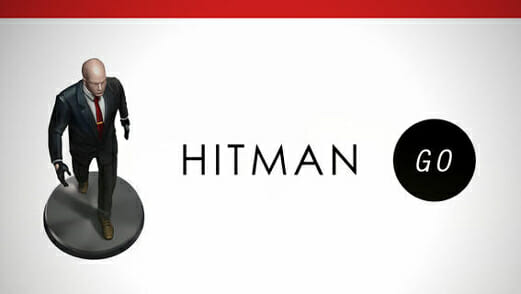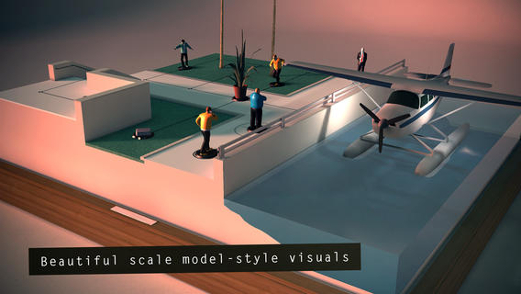
Hitman is often not the smartest series, nor the most subtle. Whether it plays to or is even aware of the mature themes of its source material seems to change from game to game. Blood Money was measured, sublime; Absolution was bloated and coarse. Instead of tending bigger or more violent, Hitman Go transposes the series’ freight to the context of a board game, and in doing so makes every aspect it touches smarter.
Go dabbles in the meta by outwardly identifying as a pseudo-tabletop experience. It hosts each small-scale section of a level on fine, metal-placqued wood boards, and positions Agent 47, along with every antagonist character, as finely cut and colored game pieces. In this stately form, adversaries lose some of their malice, and 47 his often troublesome aggression; the series’ heavy self-seriousness melts away. It leans toward a reinterpretation of old themes, and a reintroduction of them at a fundamental level through the found simplicity of making things look more like pawns on the chessboard than angry human beings.
Go traces visible routes across the diorama-like level slices that make up its boards, which both 47 and his opponents travel along. With each space 47 moves, an enemy piece will as well, advancing toward a caused distraction or along a patrol route. Seeing every possible space on the game board is no advantage: not just a specific path, but also often a specific sequence of actions (creating distractions, triggering doors or causing accidents) is required, done respective to the moves of the other pieces. In Go especially, enemy pieces are products of repetition, working or blocking their fixed paths. Its take on the series’ reoccurring motif of dominance over them is focused less on aggression, and more on dictating the arrangement of pieces to your favor, pushing and pulling them into different territory, wedging yourself into the clockwork.
Go is only intermittently a game about killing, and even then not really. At its simplest, removing an adversary piece boils down to approaching from an unseen angle. The game prefers intelligent movement and manipulation of board spaces to all else. When 47 does advance over an enemy, Go dismisses them coolly to the outer edge of the board like felled pawns; reaching a marked target becomes like taking the opponent’s king.
In its paired-down aesthetic, and in the faux-poetic justice of the actions it allows, Go divorces itself from the series’ more problematic themes and preoccupations. Guns and weapons are no longer tools of reckless aggression, but board tactics for puzzle solving and path opening, used only in careful consideration of cutting through the ranks of the other player’s men. People have always been pieces, and Hitman has always been about manipulating them to accomplish a grisly deed. Go focuses more on the former than the latter, to the effect of not burying itself in needless pulp.
As a container for its source material, Go picks and chooses its motifs, and comes down on the side of the series’ gallows playfulness and subdued physicality rather than its aggression, exploitation and brutality. It borrows the tone and tactics that made Blood Money so endearing, and that here become clever and articulate shorthand for the complex concepts of the series proper.
Hitman Go was developed by Square Enix Montreal and published by Square Enix. It is available for iOS.
Nate Andrews is a freelance editor and critic based in East Lansing whose work has also appeared in Unwinnable, Polygon, Medium Difficulty, Nightmare Mode, and Nintendo World Report. He writes at powertrash.net and tweets @_nandrews.
